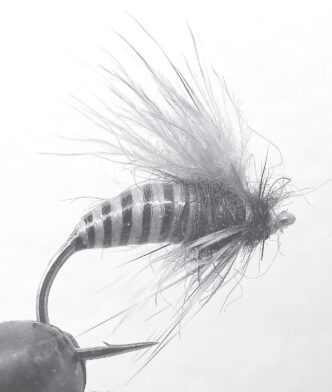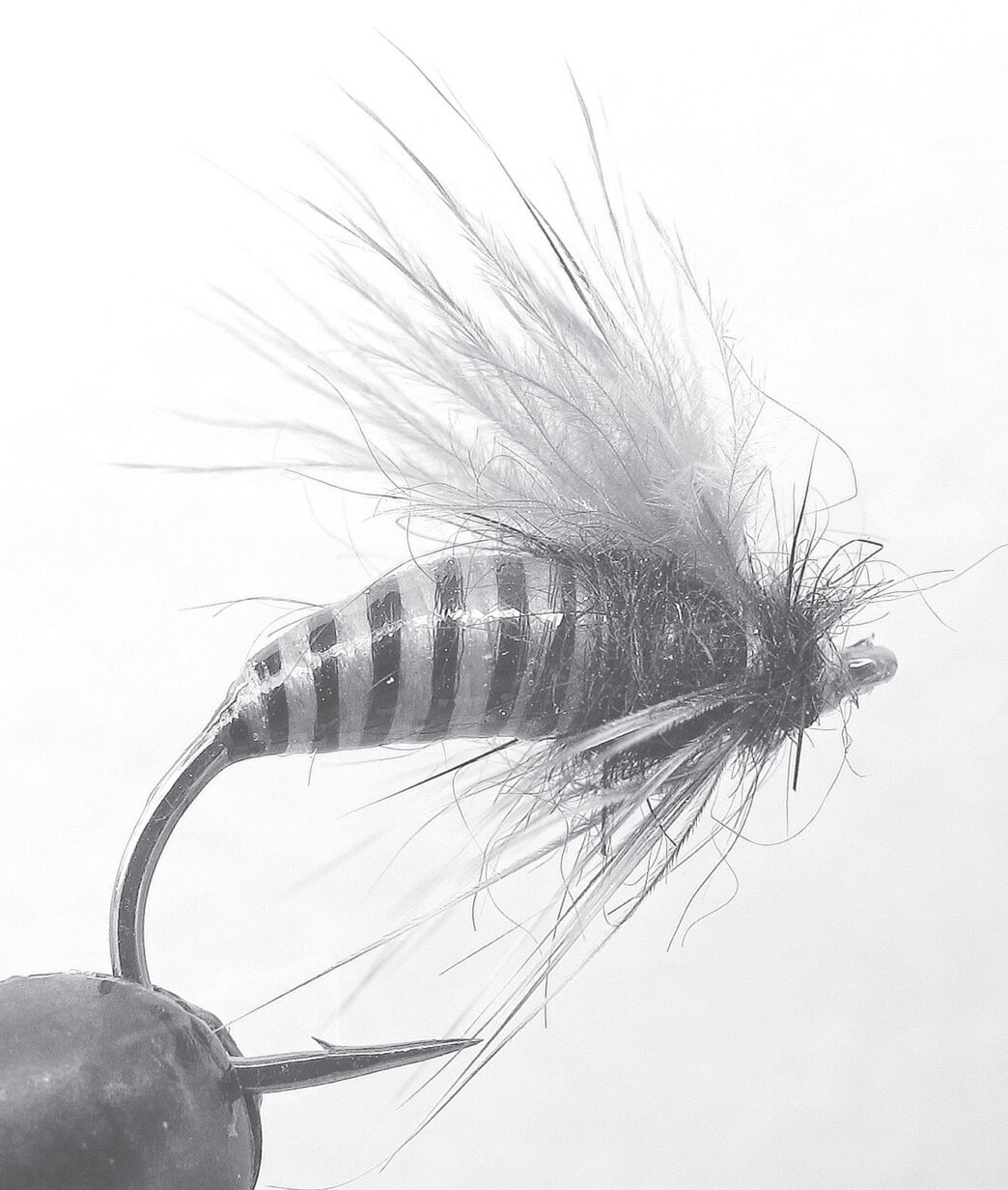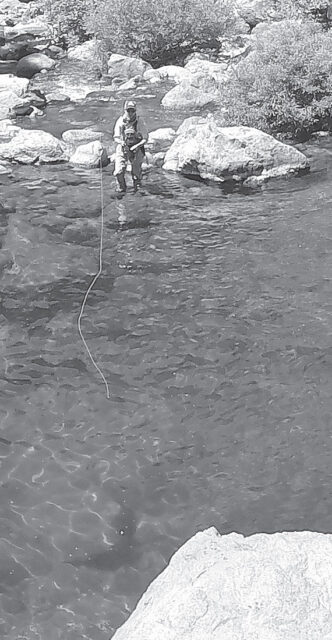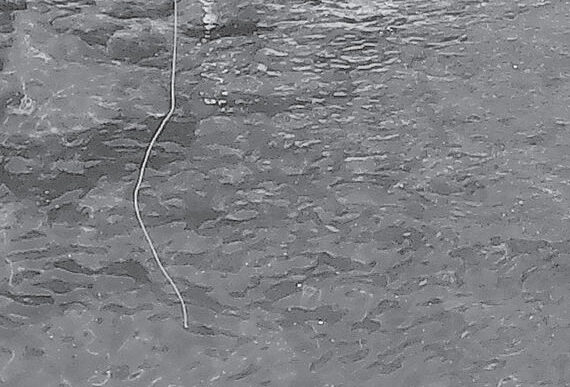Even though they are abundant along trout streams in summer, we tend to overlook the yellowjacket wasp’s potential as good bait. It’s understandable. That persistent devil orbiting our fishy hands intends to eat, and when we swat it, reward us with a nasty sting. We harbor no great love for wasps and really don’t relish seeing them while trying to concentrate on our gentle pursuit. Most of us see no poetry or grace embodied in a menacing, fat insect sporting electric prison stripes, an aggressive attitude, working mouth parts capable of excising a considerable chunk of flesh, and a stinger to boot.
That’s not to say we ignore the yellowjacket entirely. The McGinty, a cute rendition in most of its incarnations, is still a fairly well-known fly, though I doubt it gets nearly the play it got in the last century. And even though the McGinty is commonly referred to as a ‘bee’ pattern, I’m fairly certain it is more often taken as a wasp. In their writings, Ray Bergman and Roderick Haig Brown offer some sympathy for the devil, noting the importance of yellowjackets as trout food and offering imitations, as have other observant writer-anglers.
Yet the yellowjacket still remains largely unconsidered and absent from fly boxes, and I think for no good reason but for those nasty attributes mentioned above. I’m tempted to stretch and say I think the yellowjacket is the most reliable trout stream terrestrial to imitate, but I (regularly) struggle to avoid that kind of empirical remark reflecting no other but my own experience. Suffice it to say, even though humans avoid this insect, trout love it and, barring those occasions when they are fully keyed on a mayfly hatch, will generally eat the ubiquitous wasps whenever the opportunity presents itself.
Yellowjackets are common around streams and often available to trout, particularly in late summer through autumn. They hunt other insects over the water and breezes knock a lot of them down as they struggle to fly while holding their prey. Heavy insects, wasps don’t float very well, soon breaking the surface tension while struggling on the water and then drowning, making them available to trout throughout the water column. I suspect trout eat more drowned yellowjackets than they do live ones. Though I fish both wet and dry versions, the wet version presented here gets the nod as a staple pattern for angling in summer and fall. I fish the imitation with a floating line, most often cast upstream and dead-drifted high-stick style, but also quartered and swung.
Tying the Yellowjacket
Hook: size 8 and 10. I prefer a caddis style appearance, the body tied well down onto the hook bend, serving to impart the characteristic bent abdomen of a disabled wasp.
Thread: Yellow
Ribbing: Black UNI 3/0 or other monocord type thread
Body: Build a tapered football shape with yellow sewing thread and finish the abdomen portion to a smooth shape with yellow floss; then wind over with the black ribbing to create stripes. Coat with a thick head cement (I use Hard As Nails clear nail polish). Finish the thorax with black dubbing on yellow tying thread. The body should be about half abdomen and half thorax.
Wing: A clump of flue (puff) taken from the base of a dyed-brown mallard flank feather (CDC or marabou may substitute)
Hackle: Yellow, or yellow grizzly hen, wound as a collar
Head: Two turns of black dubbing in front of the hackle.
















